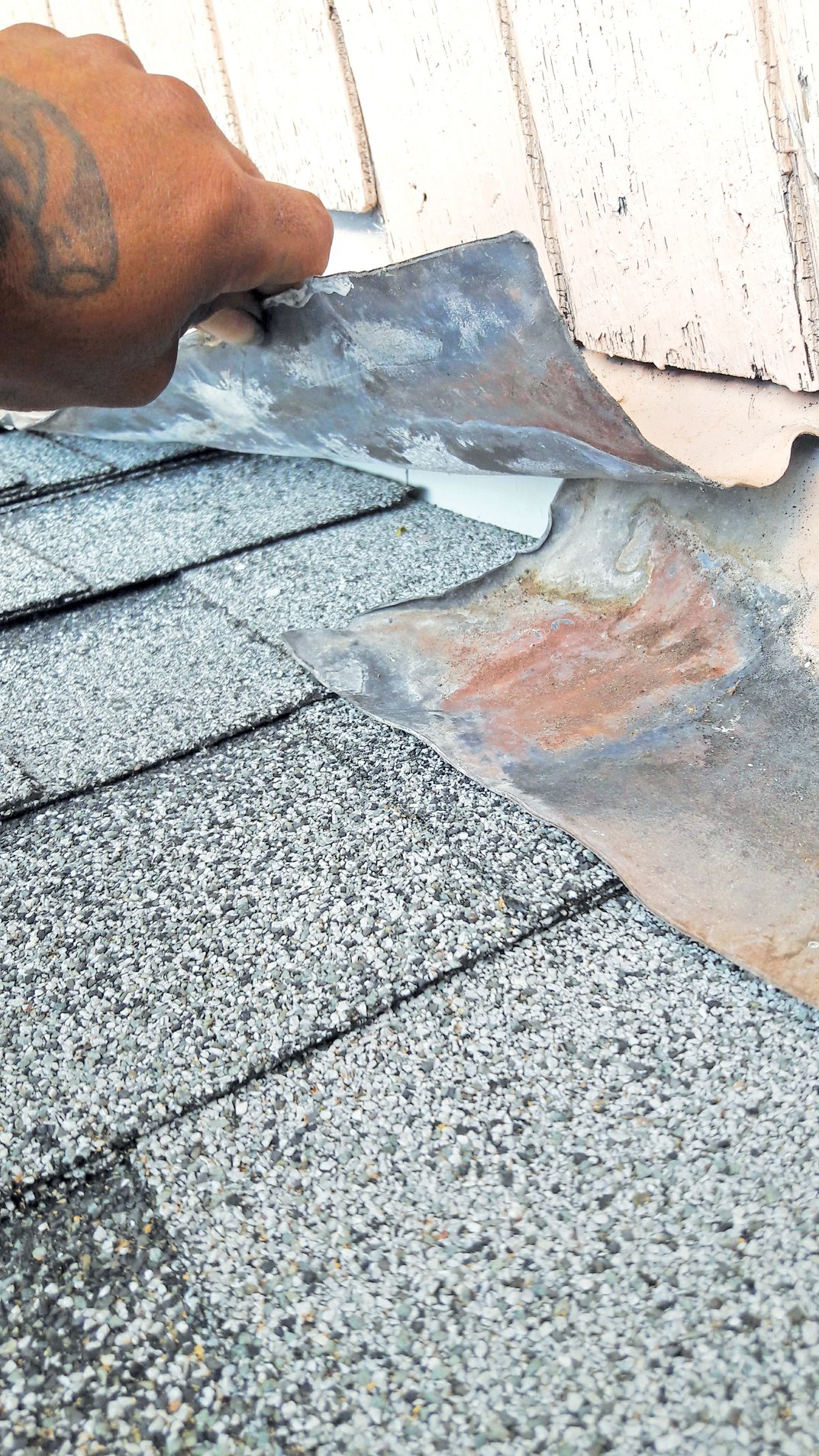
The many potholes on our roads can cause flat tires — or worse, bent wheel rims. Some flats can be fixed with a patch or plug but the tire won’t be as durable as it had been before. If the tire is beyond repair and the wheel rim is bent from falling into a cave-of-death pothole, a new tire is in order.
Similarly, there are times when it’s possible to repair your roof to patch up a leak or replace a few shingles. Other times, trying to patch it when you need a roof replacement is not the right financial choice in the long run. It’s kind of like patching your tire and driving on the bent rim; you’ll pay for it in wheel alignments and a damaged car frame in the long run.
When to repair
We love cool tradewinds, but huge gusts may blow off roof shingles. You’ll want to get that repaired as soon as possible — before a giant downpour causes more roof damage.
If your roof is a bit older, your flashing could use a checkup to see if corrosion is starting. Flashing is a metal cover that provides added protection around the perimeter of the roof.
Since we are in hurricane season, check if exposed roof clips, ties or anchors are showing signs of loosening or rust. This shouldn’t require being on the roof — most aftermarket clips and ties are visible under the roof’s eaves.
When to replace
Hawaii has beautiful weather, but we are all familiar with those muggy, windless nights when the termites come out of the woodwork. Their emergence may indicate that your home is hiding a lot more termites and could have wood damage. The problem with that is the structural frames of most roofs are constructed of wood.
Some people may think, “If it doesn’t look broke, it’s probably OK.”
This is true only some of the time. When it comes to roofs, homeowners — no matter how awesomely handy — should leave walking on the roof to the pros. If you have a drone, it’s OK to fly it over your roof to check for missing shingles or other problems.
Murakami Roofing professional estimators can see the signs of a brittle, termite-eaten roof and can spot the signs of brittle, rotten wood, which signals a need for a roof replacement.
A rule of thumb — which would be hard to assess without a roof inspection — is if there is 30% or more of roof damage, a roof should be replaced.
Reroofing
Reroofing applies a new layer of roofing material over the existing roof, like carpeting over an old wood or tile floor. It doesn’t fix the base problem but covers it up and is sufficient.
A roof replacement removes all of the old layers and starts fresh with new roofing materials.
Going back to our tire analogy, the reroof is the patch and the roof replacement is the new tire. A roof repair should last one to two years while a roof replacement will last 15-20 years or more depending on the type of material (shingles, tile or metal used).
Insurance
Consider your choice of repair, reroofing or replacement with homeowner’s insurance in mind. If it’s closing in on renewal time and you have not yet received a notice of cancellation (required in advance of cancellation), weighing the chance of insurance cancellation may impact a decision. A new roof with fire-rated shingles and hurricane-protection systems check the box of “looking good” (not a guarantee but definitely hedges your bets).
The worst-case scenario is your home could become the house on the block with a caved-in roof, but before that happens, call Murakami Roofing for a free roof inspection. The company’s many years of experience in spotting roof issues offer homeowners a more accurate diagnosis and recommendation to repair or replace their roof.
MURAKAMI ROOFING LLC
Contact
808-348-8270
Address
45-558 Kamehameha Hwy.
Ste. C-18, Kaneohe
Email
info@murakamiroofing.com
Web
murakamiroofing.com
See more articles from: Murakami Roofing